Abstract
A 5-year-old male patient presented to the Sekuru Kaguvi Eye Hospital (SKH) with a painful discharging right eye (RE) for 1 year. Two months prior to presentation, he developed a non-productive cough, night sweats and loss of weight. On examination, a granulomatous follicular conjunctivitis and a corneal phlyctenule were noted in the RE, as well as ipsilateral preauricular lymphadenopathy. In collaboration with the paediatricians, a diagnosis of Parinaud’s oculoglandular syndrome (POGS) as a manifestation of tuberculosis was made. This is the first reported case of POGS and tuberculosis in Zimbabwe.
Introduction
Parinaud’s oculoglandular syndrome (POGS) is a unilateral granulomatous conjunctivitis associated with chronic low-grade fever and ipsilateral regional lymphadenopathy.1 This is a rare ocular syndrome.2 Several infectious agents and autoimmune diseases have been attributed to the aetiology of POGS. Cat-scratch disease caused by Bartonella henselae is the most common aetiology.3 Occasional aetiological agents of POGS include Mycobacterium tuberculosis and Treponema pallidum.3 Rare agents include Actinomyces israelii and Blastomyces dermatitidis.3 These are just a few examples of the many causative agents.
Case report
A 5-year-old male patient presented to the paediatric outpatients department (OPD) at the Sekuru Kaguvi Eye Hospital (SKH) with a painful right eye (RE), associated with tearing as well as swelling of the upper eyelid for 1 year. When the symptoms initially started, the patient was taken to a district hospital where a clinical diagnosis of bacterial conjunctivitis was made and the patient was prescribed tetracycline eye ointment three times a day (t.d.s.). The parents noted a minimal improvement in the symptoms with its use. Five months prior to presentation at the SKH, the patient began to complain of pain in the periauricular region. During this time, the mother noted masses in the RE. There was no history of trauma or contact with cats or rabbits.
On further enquiry, the patient admitted to having a non-productive cough, which the mother had noted 2 months prior to presentation. It was associated with chills, night sweats, general body weakness and loss of weight. There was no shortness of breath.
There was no history of previous admissions, surgery and no known allergies. The patient had three HIV tests done at the district hospital. The results were negative. The patient had a positive history of contact with a person with pulmonary tuberculosis (TB), when he stayed with his grandmother 2 years ago.
On general examination, the patient had a low-grade pyrexia of 37.5 °C, the pulse was 98 beats per min and he was not in respiratory distress with a breathing rate of 23 breaths per min. There was fullness in the right preauricular region with tender firm preauricular and submandibular lymphadenopathy, ranging in size from 2 cm to 3 cm (Figure 1).
 |
FIGURE 1: Fullness of right preauricular region because of preauricular and submandibular lymphadenopathy. |
|
The patient also had bilateral axillary and inguinal lymphadenopathy. The axillary and inguinal lymph nodes ranged in size from 1.5 cm to 3.0 cm. They were non-tender and firm, not warm to touch and did not have any fluctuant areas.
On ocular examination, the visual acuity in the RE was 6/60 (Malawi Chart) and the visual acuity in the left eye (LE) was 6/6. The RE upper eyelid was swollen with a mucopurulent discharge, mattered eyelashes and mardarosis nasally. The conjunctiva was injected, with irregular granulomatous masses noted on the upper palpebral conjunctiva with surrounding follicles (Figure 2). A gelatinous nodular mass (approximately 0.5 cm × 0.5 cm) was noted on the bulbar conjunctiva nasally. There were no true or pseudomembranes noted. An ulcerated corneal phylctenule was seen at 15:00, and the rest of the anterior segment examination was normal.
 |
FIGURE 2: (a) Mattered lashes, mardarosis nasally and a mucopurulent discharge; (b) irregular granulomatous masses on the upper palpebral conjunctiva; and (c) ulcerated corneal phlyctenule at 15:00. |
|
The examination of the LE was essentially normal. Fundoscopy was normal in both eyes.
On examination of the respiratory system, there was equal air entry bilaterally, and there were no crepitations. The abdomen was soft, and a 3 cm non-tender hepatomegaly and a splenomegaly were noted. The examination of the other systems was normal.
In view of the history and examination findings, the differential diagnoses included POGS with TB as a possible cause, ocular surface squamous neoplasia with a bacterial conjunctivitis and ligneous conjunctivitis, although unlikely as this disease usually has a bilateral presentation.
The patient was admitted and commenced on gutt ciplox RE two hourly and occ chloramphenicol RE nocte. The following investigations were ordered: a full blood count (FBC), urea and electrolytes (U&E) and a chest X-ray (CXR). The paediatricians were consulted for joint management of the patient.
The full blood count showed: white cell count – 7.54 × 103/uL (5.5–15.5), neutrophils – 50% (25–57), lymphocytes – 40% (35–65), eosinophils – 0.5% (0–3), monocytes – 1% – slightly elevated (0.0–0.8), haemoglobin – 11.8 g/dL (10.9–14.9), platelets elevated – 541 × 103/uL (150–400) and mean corpuscular volume slightly decreased – 75.7 fL (78–98).
Urea and electrolytes results were normal. Sodium: 137.0 mmol/L (135–148), potassium: 4.6 mmol/L (3.5–5.8), urea: 1.9 mmol/L (1.8–6.0) and creatinine: 27.0 umol/L (17.7–70.7).
The chest X-ray showed a widened mediastinum because of lymphadenopathy.
The patient was taken to the theatre for an incisional biopsy of the conjunctival masses.
On day four post-admission, the paediatricians transferred the patient to the paediatric ward for further investigations. At this point, the preauricular lymphadenopathy was now bilateral and the mucopurulent discharged had decreased, but the patient remained with a low-grade pyrexia. They ordered a Mantoux test and a lymph node biopsy. The Mantoux test was positive with a flare of 5 cm. They attempted to do the lymph node biopsy under local anaesthesia but failed as the child was uncooperative.
They made a diagnosis of TB based on the clinical presentation, CXR and positive Mantoux test. Anti-TB treatment was commenced, and the patient was told to return for a review in the paediatric OPD in 1 month.
When the patient came to the SKH OPD for review after 2 weeks, there was a marked improvement in terms of the patient’s condition. The eye had a minimal yellow discharge, the conjunctival injection had reduced and the eyelid swelling had subsided. Visual acuity in the RE had improved from 6/60 to 6/24.
The histology results from the incisional biopsy showed conjunctiva with caseating poorly formed granulomata as well as multinucleated giant cell appearances consistent with TB.
The patient continued on his anti-TB treatment. On review, after being on anti-TB treatment for 1 month, visual acuity on the RE was 6/12; there was mild conjunctival injection and triangular corneal scarring from a healed phlyctenule at 15:00 (Figure 3).
 |
FIGURE 3: (a) Marked clinical improvement on TB treatment and (b) corneal scarring from a healed phlyctenule. |
|
Discussion
This case demonstrates how an infectious bacterial disease, which is the 9th leading cause of death worldwide,4 can cause a rare ophthalmic syndrome. Tuberculosis, caused by Mycobacterium tuberculosis,5 usually presents in the pulmonary form. Approximately 10% – 25% of all cases will present at an extrapulmonary site.6 These sites include the pleura, the skeletal system, the central nervous system, the genitourinary system and the eye, to name a few.5,6 Extrapulmonary TB, which is especially common in children and HIV patients, can be suspected in endemic countries in cases with chronic lymphadenopathy.7 These patients can have the same symptoms as patients with pulmonary TB (fever, night sweats, loss of appetite and loss of weight), but in addition they will have complaints specific to the body site infected,7 as was in this case. These patients must have appropriate specimens taken from the site for histopathological examination.8
Zimbabwe is a high TB burden country as defined by the World Health Organization.9 The child in this case had a clear history of household TB contact. Household contacts to an infectious case of TB, especially children under 5 years, are a priority for TB screening.10 This child may have benefitted from contact investigation which may result in early detection of the disease.10 International Standards for TB Care state that all children younger than 5 years and people living with exposed infectious cases of TB should be evaluated for active TB and considered for treatment of latent TB.10 Albeit contact investigation is performed in only a few countries.10
Ocular TB presents in many different ways.11 This includes orbital and lid masses, dacryoadenitis, keratoconjunctivitis, uveitis, choroidal tubercles, endophthalmitis and panophthalmitis.12 Infection may be primary, where the eye is the first port of entry for the disease or secondary because of haematogenous spread from a distant site. Uveitis is the most common ocular manifestation of TB, because of the high blood supply of the uveal tract.13
Parinaud’s oculoglandular syndrome is a rare differential diagnosis of a ‘red eye’ and because of this, the literature on this pathology is sparse.2 As in our case, this syndrome is often misdiagnosed as a bacterial or viral conjunctivitis at the primary and secondary healthcare levels because of the similar ocular findings.14 Healthcare providers at these levels should refer all patients with a granulomatous conjunctivitis and ipsilateral preauricular or submandibular lymphadenopathy for further investigation.
Besides being misdiagnosed, POGS is also significantly under-reported. A review in literature in 2015 in the past 20 years done by Arjmand et al. in Ottawa, Canada, revealed 43 cases.2 Forty (93%) of the cases were because of cat-scratch disease, one case was because of tularaemia, one was because of herpes simplex virus and one was because of paracocciodiomycocis.2
Healthcare providers should be aware of this rare syndrome and in likely cases refer or investigate appropriately.
Acknowledgements
Competing interests
The authors declare that they have no financial or personal relationships which may have inappropriately influenced them in writing this article.
Authors’ contributions
N.M. is the main author who wrote the article. R.M. is the co-author who assisted in editing the article.
References
- Kanski JJ. Clinical ophthalmology. 7th ed. Edinburgh: Elsevier Saunders; 2011; p. 573–6.
- Arjmand P, Yan P, Connor MDO. Parinaud oculoglandular syndrome 2015: Review of the literature and update on diagnosis and management. Clin Exp Ophthalmol. 2015;6(3): 1000443.
- Tu E. Parinaud’s oculoglandular syndrome. In: W. Tasman & E.A. Jaeger, editors. Duane’s ophthalmology [serial on CD-ROM] 2011. Philadelphia: Lippincott Williams & Wilkins; 2006;4:1–2.
- World Health Organization. WHO global tuberculosis report 2017 – Executive summary. Geneva: World Health Organization; 2018.
- Shakarchi F. Ocular tuberculosis: Current perspectives. Dove Press J Clin Ophthalmol. 2015;9:2223–7. https://doi.org/10.2147/OPTH.S65254
- Golden MP, Raphael S, Haven N. Extrapulmonary tuberculosis: An overview. Am Fam Physician. 2005;72(9):1761–8.
- Inayat F, Jafar MS, Ali NS, Hussain Q, Hurairah A. Enigma of extrapulmonary tuberculosis: Where do we stand? Cureus J Med Sci. 2017;9(8):e1554. https://doi.org/10.7759/cureus.1554
- Zimbabwe Ministry of Health and Child Welfare. National guidelines for TB/HIV co-management. Harare: Ministry of Health and Child Welfare Zimbabwe; 2014, p. 22.
- World Health Organization. Use of high burden country lists for TB by WHO in the post-2015 era: Summary. Geneva: World Health Organization; 2016.
- World Health Organization. Recommendations for investigating contacts of persons with infectious tuberculosis in low- and middle-income countries. Geneva: World Health Organization; 2012.
- Bodaghi B, Lehoang P. Ocular tuberculosis. Curr Opin Ophthalmol. 2000;11(6):443–8. https://doi.org/10.1097/00055735-200012000-00010
- Sheu S-J, Shyu J-S, Chen L-M, Chen Y-Y, Chirn S-C, Wang J-S. Ocular manifestations of tuberculosis. Am Acad Ophthalmol. 2001;108(9):1580–5.
- Varma D, Anand S, Reddy A, Das A, Watson J, Currie D, et al. Tuberculosis: An under-diagnosed aetiological agent in uveitis with an effective treatment. Eye (Lond). 2006;20:1068–73.
- Ridder GJ. Cat-scratch disease: Otolaryngologic manifestations and management. 2003;132:353–8.
|



